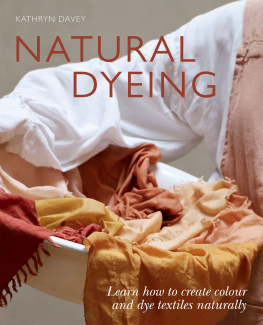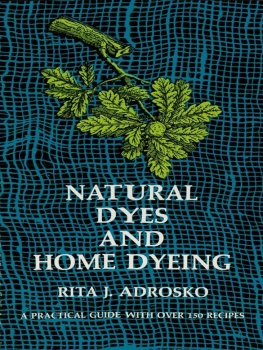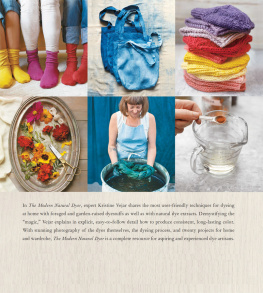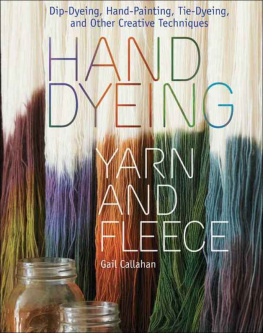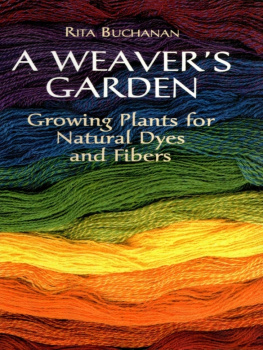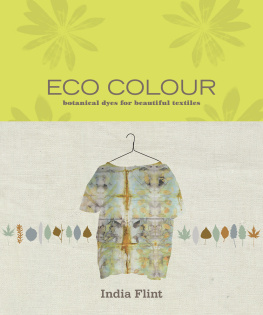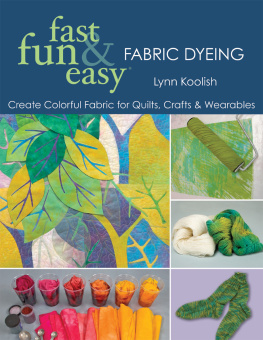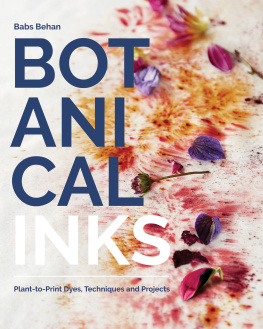

I fell into natural dyeing almost accidentally, having never studied textiles or natural dyeing formally. Through books and from dyers who generously shared what they knew, I learnt through trial and error and a desire to understand. It became clear that there were no mistakes in this process: every result was a necessary and beautiful step along the way.
When it comes to natural dyes, indigo was my first true love. Like all firsts it left an indelible impression on me and I was completely enamoured, obsessed and consumed with the beauty and range of just one colour, blue. And so it continued with every new dye I began to work with. They each held their own particular magic, their aroma when brewing, the colours and how they reacted when modified slightly. What struck me deeply was how complementary the tones of natural dyes were with each other. How you could take one dye and change it ever so slightly to give you a whole new range of variations. They were soft, gentle, soothing and beautiful like nothing I had seen before. The possibilities were and still are truly endless.
At first I took it in bite-sized chunks. I would begin with a new dye and experiment until I understood its palette and nuances. It was incredible to see that nature held an array of colour within its fibres, almost like a secret or hidden language of colour, waiting to be coaxed forth. I became fascinated by the alchemy of dyeing and the more I learnt, the more humbling and deeply satisfying the process became. I remember how it felt to learn something new; the intense desire to get to a certain place of familiarity and comfort, to work through the feeling of being overwhelmed and lack knowledge. There is something quite beautiful about not only beginning but being a beginner in something that interests you.
In many ways natural dyeing is similar to cooking. There is an alchemy that happens. I know how it feels to create a dish I have prepared a thousand times and how different it feels to follow a recipe for the first time. It is this feeling of unfamiliarity and lack of confidence that I want to help others overcome when learning how to work with plant dyes.
Natural dyeing is one of the most labour-intensive endeavours I have tried, next to parenting. It requires copious amounts of time and patience. You have to be willing to invest many hours of work with no solid guarantee of a result. Working with natural dyes is something I never grow tired of, and lately I am coming to appreciate how cathartic it is for myself and many others who work with plant dyes and colour in this way.
What began from a place of intrigue and curiosity, developed into a borderline addiction and obsession. I fell down the most beautiful rabbit hole into a world of colour and unlimited possibilities. Plant dyes teach me about colour in a way that nothing else has. They have expanded my appreciation and increased my respect for the natural world while delighting my senses and soothing my soul.
With this book, I want to share what I have learnt in a simple and easily digested way. There are many ways to work with plant dyes and I encourage you to find your own. It is my hope that experimenting with natural dyes will be as beautiful, peaceful, enjoyable and as deeply satisfying for you as it has been for me.

Natural dyeing is an ancient practice of extracting colour or dyes from plants, invertebrates or minerals for the purpose of dyeing cloth and natural fibres. We do not know the exact point in history when our ancestors discovered that natural materials could be used as forms of pigment, ink or dye, but there is evidence of mineral-based pigments used to depict scenes of everyday life in the earliest known cave paintings.
While we suspect that cooking and other daily practices may have informed the discovery of food and plants as dyestuff, we can be more certain how and when it first began. We know that natural dyes have been used to colour textiles for at least 6,000 years. With many vibrant examples of preserved textiles, garments and rugs from the ancient world we have learnt much about the history of our previous civilisations and their relationship to natural colour. Long before synthetic dyes were discovered, natural dyes were the sole method of colouring fibre and cloth. As civilisations began to grow and expand, trade routes opened up and dyes were shared around the world. Natural dyeing was practised throughout Greece, Rome, Egypt, South America, Africa and Asia and among the native people of North America. When synthetic dyes were discovered in the mid-nineteenth century, they were quickly adopted as the main source of commercial dye as they were both cheaper to develop and considerably less labour-intensive to produce. With the development of the synthetic dye industry, natural dyes became secondary and so began the demise of the natural dyeing market.
Working With Nature
Once you begin working with plant dyes you start to learn about the many sources of colour available to us through the natural world. By working with plants, flowers, trees or food waste it opens you up to a new relationship with nature, one of appreciation, curiosity and respect. The process of extracting colour naturally can be an enjoyable experience. The possibilities of natural dyes lie in the subtlety and range of colours alone, modified or combined with each other. These dyes have an innate beauty and life to them that are lacking in synthetic dyes. Plant dyes make you look at the natural world around you in a different light. Once you start dyeing you begin to look at things, not only to appreciate the innate beauty of what they are, but also to see the colour that lies behind each seed, plant, leaf, tree or root.
Discover the Colour All Around You
It becomes fascinating to see that there is so much colour available to use through the natural world. A garden full of dandelions is no longer a garden full of weeds, but full of greens and yellows. A cup of tea or coffee, breakfast, a meal, all hold potential for colour. Colour is dormant in so many aspects of our lives. Take waste, for instance, it can be transformed into something beautiful to dye textiles with. There is something so magical and fluid about the quality of natural dyes and how they catch the light in different ways. Synthetic dyes are flat and one dimensional whereas the tones of natural dyes reflect light differently, they dance and come alive before your eyes. They, like all things in nature, change throughout the light of the day and through the life of the textiles they colour.
Working with plant dyes connects you to the seasons of nature, to the tree that flowers in spring, gives fruit in summer and seed in autumn, all yielding different colours for the dye pot depending on the time of the year. In the most unassuming way working with plant dyes creates a relationship to nature, one of observation, appreciation and respect.
Slowing Down and Being Creative
As we all go through our lives, one thing is certain, creative outlets are essential to our mental health and well-being. The simple act of slowing down and working with our hands calms the mind. Allowing ourselves to take time to create and explore what interests us outside the daily grind is an act of self-love and a huge gift to ourselves. The entire process the gathering or foraging, cooking, the alchemy, the necessary patience and the beautiful end result pulls you in and absorbs you fully, calming the body and occupying the mind. It is a deeply satisfying process of creating something beautiful from nature. It takes you into a world of colour that can soothe and nourish your soul. You cannot rush natural dyeing as every step in the process takes time. By its nature it is calming, grounding and meditative, forcing you to slow down and be present.
Next page
